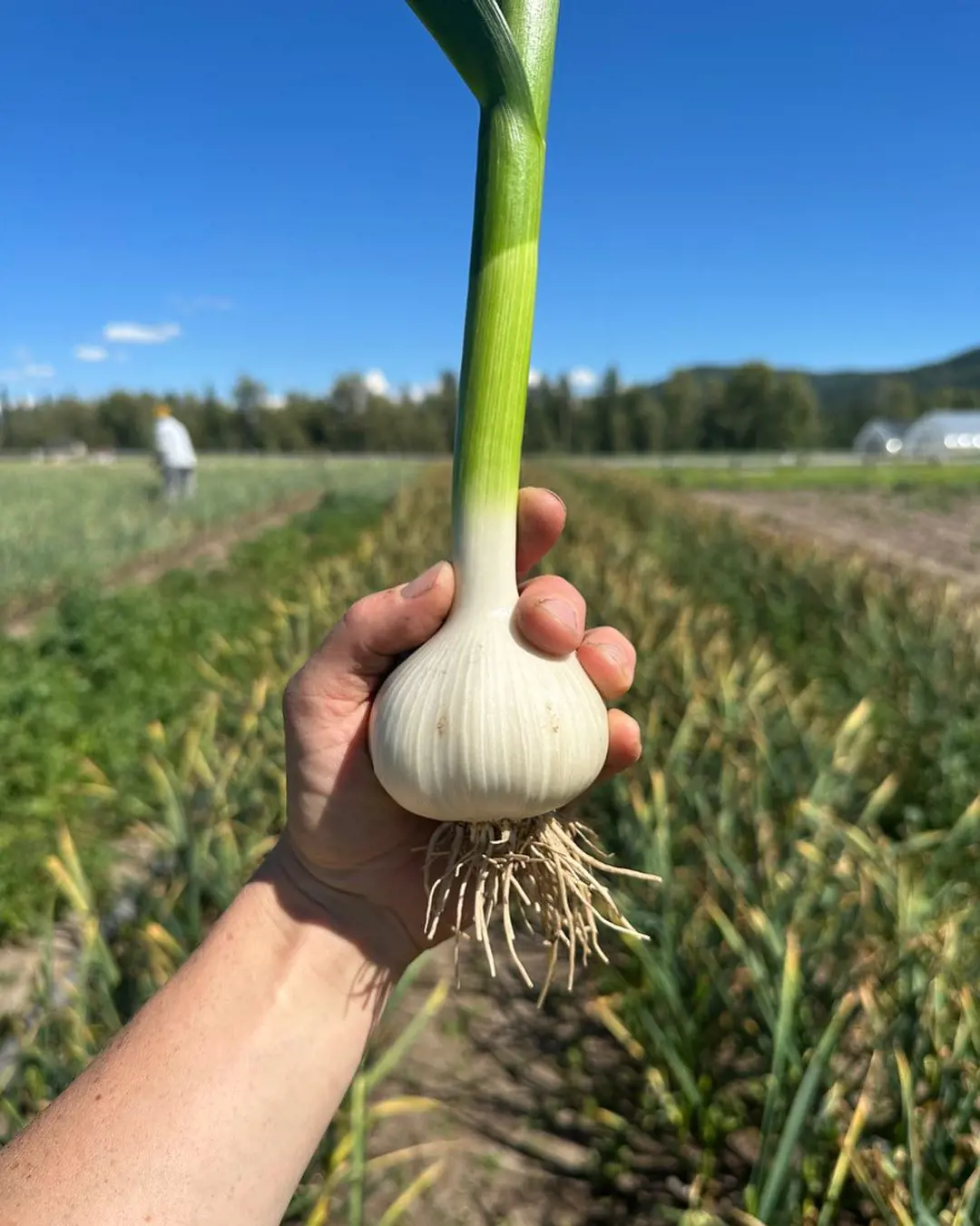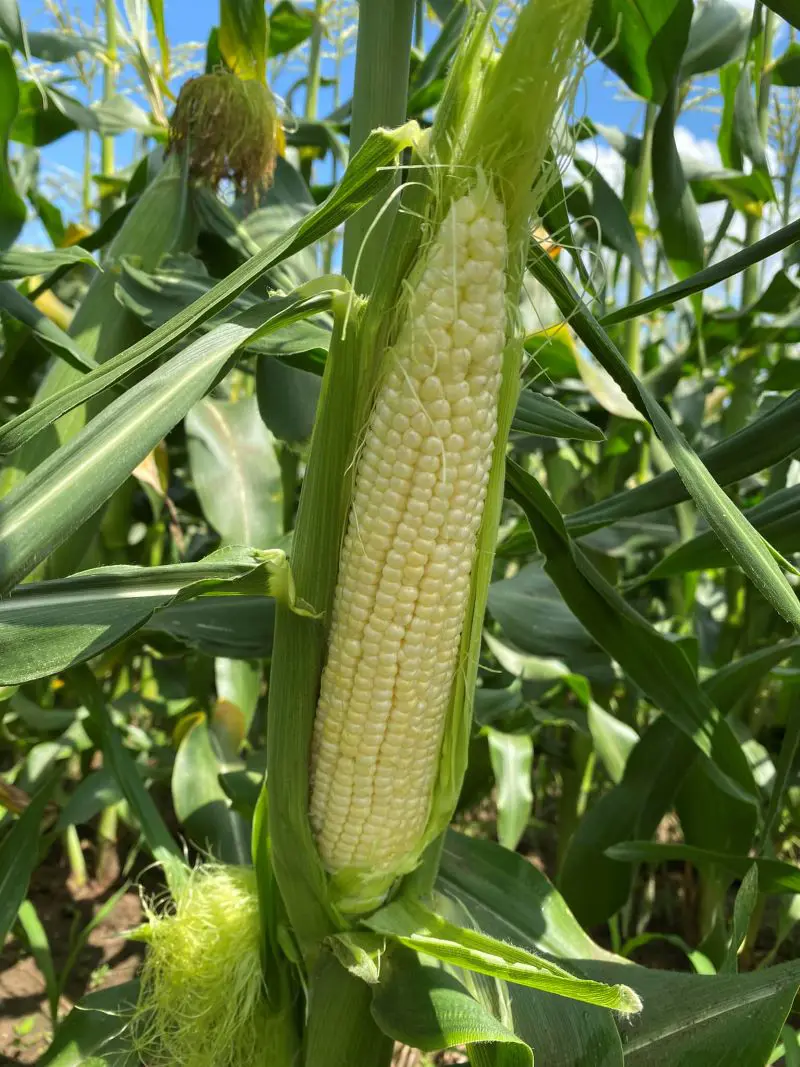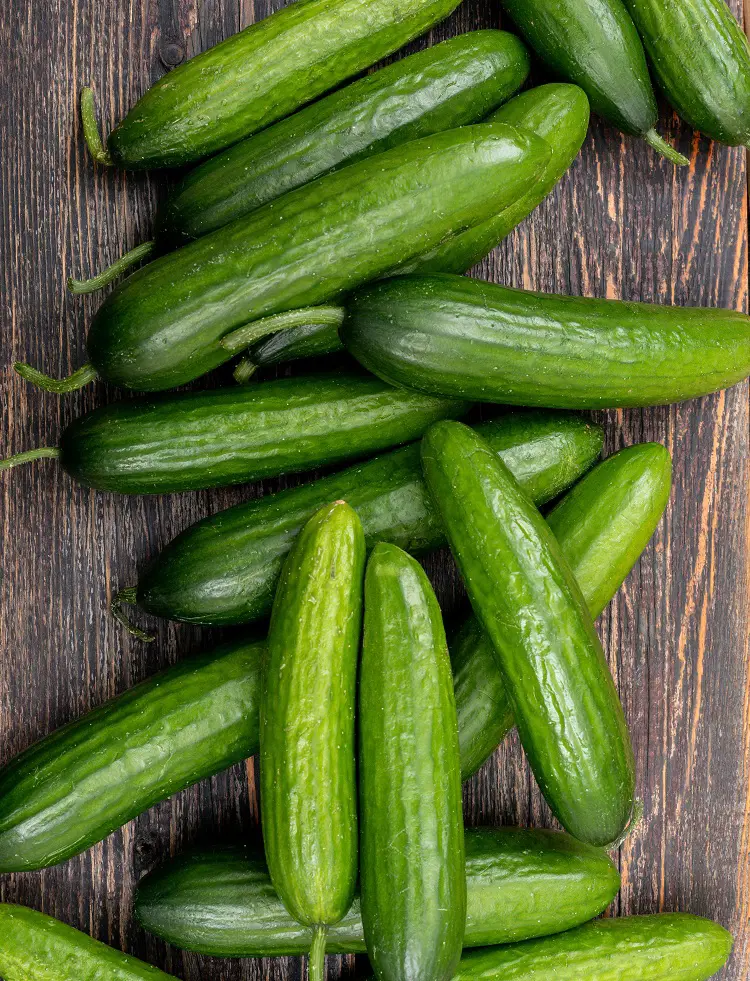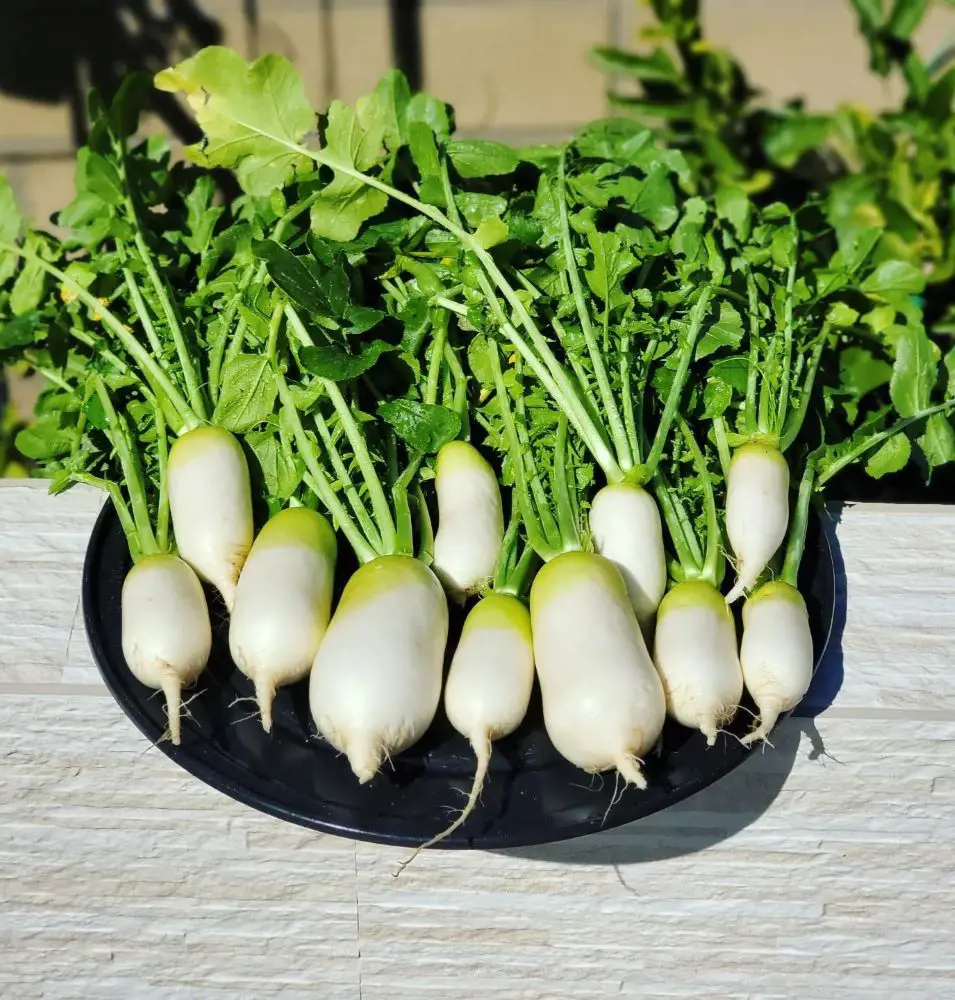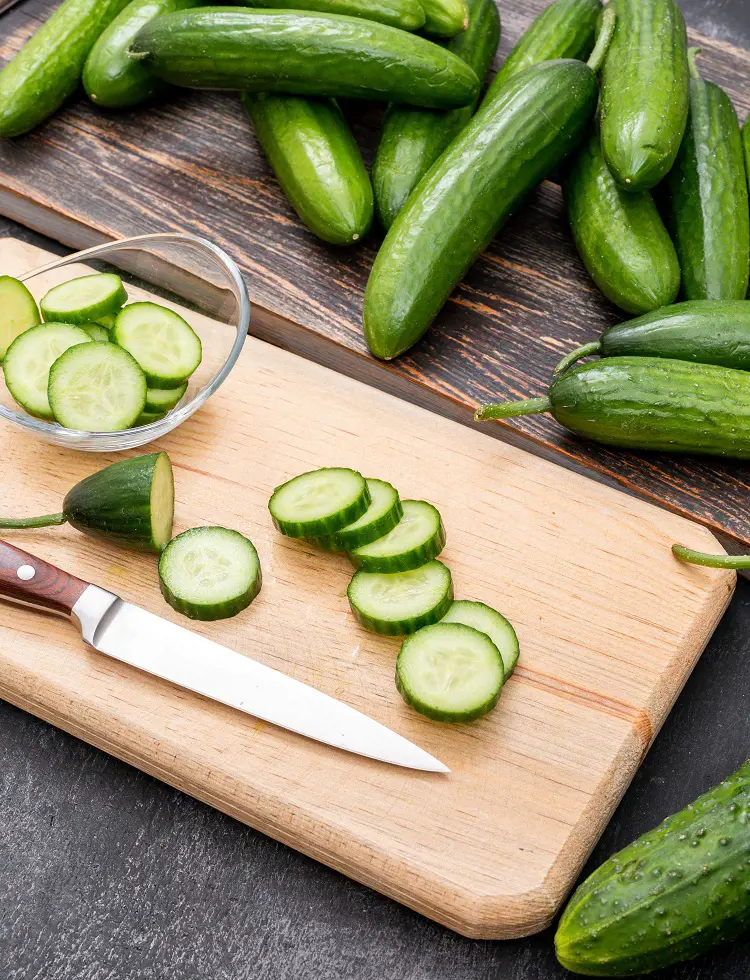How To Plant And Grow Raspberries In Home
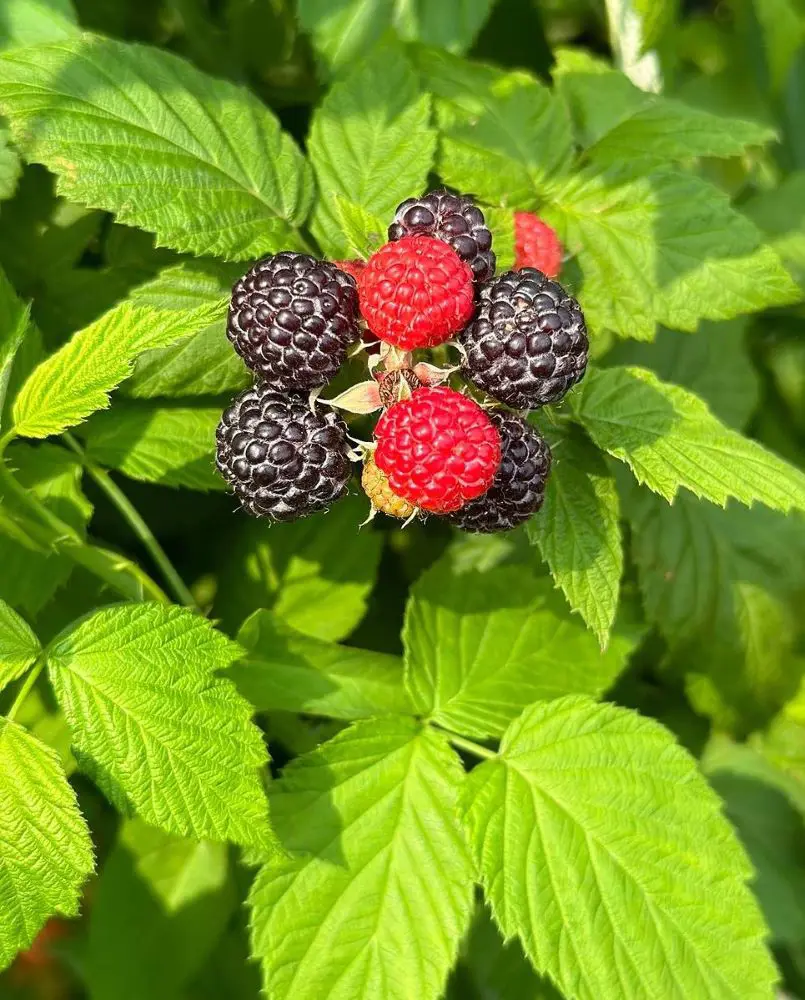
This post may contain affiliate links. If you make a purchase through links on our site, we may earn a commission.
Planting and growing raspberries at home is a rewarding experience, offering delicious berries alongside health benefits. This plant is known to enhance garden biodiversity and also helps in preventing soil erosion.
These fruits grow in harmony with other houseplants and even promote soil fertility. With minimal care, raspberries not only provide a sustainable food source but also enrich your garden's ecosystem.
Raspberry Plant Overview
| Scientific Name | Rubus idaeus |
| Common Name | Raspberry |
| Family | Rosaceae |
| Type | Perennial |
| Size | Typically 4-6 feet in height |
| Sunlight Requirement | Full sun |
| Soil Type/pH | Well-drained soil, slightly acidic to slightly alkaline pH |
| Growing Season | Summer and fall |
| USDA Growing Zone | Zones 4-8 |
| Native Area | Europe and northern Asia |
When To Plant Raspberries
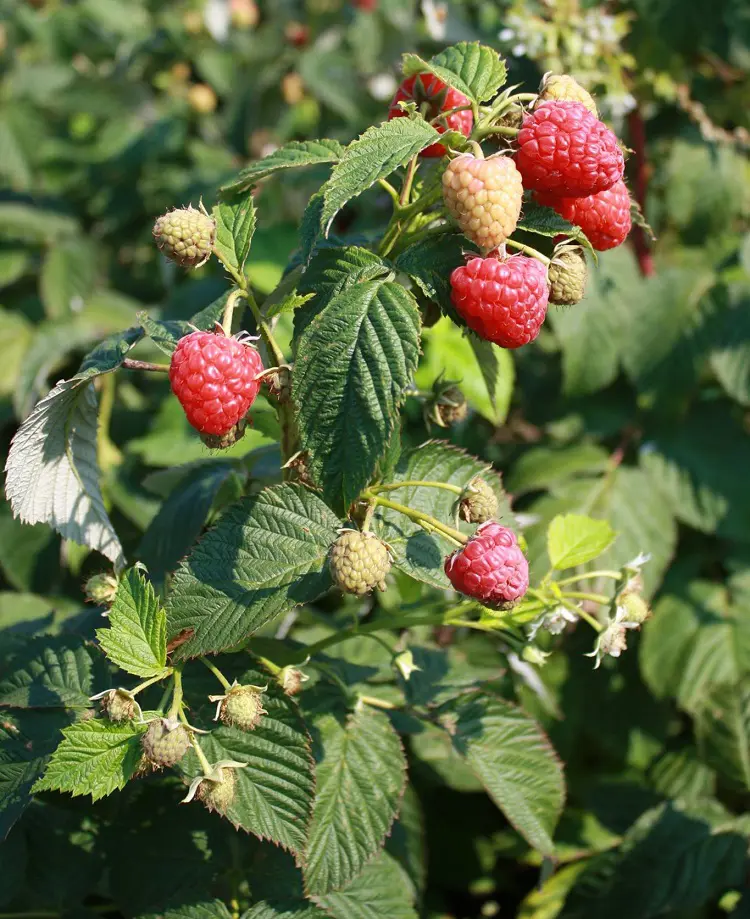
The timing for planting raspberries depends on your local climate. But, generally, there are two main seasons suitable for planting: late fall and early spring. Here are some guidelines:
Fall Planting (Late Fall)
- Best Time: In regions with mild winters, fall planting is often preferred. Aim to plant raspberries about 4-6 weeks before the first hard frost.
- Advantages: Planting in late fall allows the raspberry plants to establish their root systems before the winter dormancy period. It provides a head start for growth when spring arrives.
Spring Planting (Early Spring)
- Best Time: In colder climates where winters are harsh, it's recommended to plant raspberries in early spring after the danger of frost has passed.
- Advantages: Spring planting allows the raspberry plants to take advantage of the warmer temperatures and longer days for initial growth. It is a common practice in areas where fall and winter are less favorable for plant establishment.
How To Plant Raspberries
Planting raspberries involves careful preparation to ensure optimal growth and fruit production. Begin by selecting a suitable site with well-drained soil and ample sunlight. Space plants according to their specific variety, considering proper air circulation.
Prioritize soil enrichment with organic matter and perform a soil test to address nutrient needs. When planting, set the raspberry canes at the correct depth, providing support if necessary.
Choose the Right Variety
When choosing raspberries for your garden, consider your climate and soil. There are two main types: summer-bearing, which gives fruit in early to midsummer, and everbearing, which produces in both summer and fall. Pick a variety that suits your region. Examples are Heritage, Boyne, and Tulameen.
Each has unique characteristics, so match them to your local conditions for a successful harvest. Knowing your raspberry type ensures optimal growth, maximizing your chances of enjoying delicious berries throughout the growing season.
Select a Suitable Location
For successful raspberry growth, pick a location with well-drained soil, a slightly acidic to slightly alkaline pH. Opt for a spot with full sun exposure, giving your raspberries at least 6 hours of sunlight daily. Good air circulation is crucial to ward off diseases.
By selecting a suitable location with these conditions, you create an ideal environment for your raspberries to flourish, ensuring healthy plants and a bountiful harvest of delicious berries.
Prepare the Soil
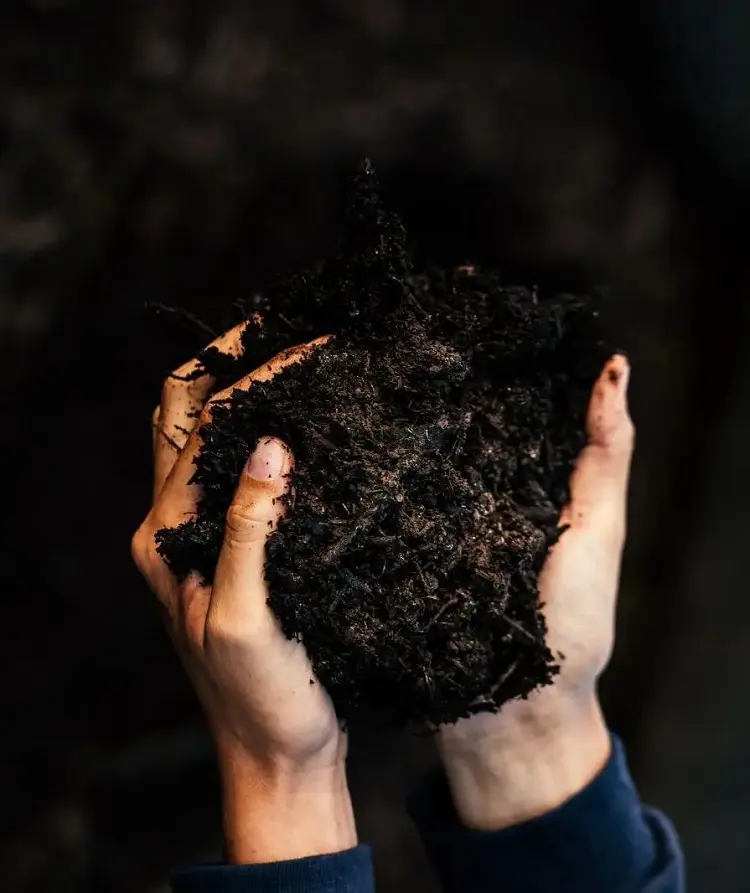
Prepare your raspberry bed by cultivating the soil to a depth of 8-10 inches. Integrate organic matter, such as compost, to boost fertility and improve soil structure. Conduct a soil test to identify any nutrient deficiencies, allowing you to address specific needs.
This preparation creates an ideal foundation for raspberry plants, providing the necessary nutrients and a well-aerated environment for root development. By investing time in soil preparation, you set the stage for healthy and productive raspberry plants, increasing the likelihood of a successful and abundant harvest.
Planting Depth
When planting raspberry canes, ensure they are placed about 2 inches deeper than their original nursery containers or previous location. This depth promotes stability and encourages strong root development. Keep a spacing of 2-3 feet between individual plants in rows, allowing for sufficient air circulation and providing ample space for each plant's growth.
Adequate spacing helps prevent overcrowding, reducing the risk of diseases and ensuring that each raspberry plant receives the necessary sunlight and nutrients for optimal development and fruit production.
Mulching
Mulching involves placing a layer of organic material, like straw or wood chips, around the raspberry plants. This technique offers various benefits, including moisture retention, weed suppression, and soil temperature regulation.
By providing optimal growing conditions, mulching enhances the overall health and productivity of raspberry bushes. It creates a protective barrier that conserves water, prevents weed competition, and stabilizes soil temperature, promoting an environment conducive to successful raspberry cultivation.
Raspberries Care
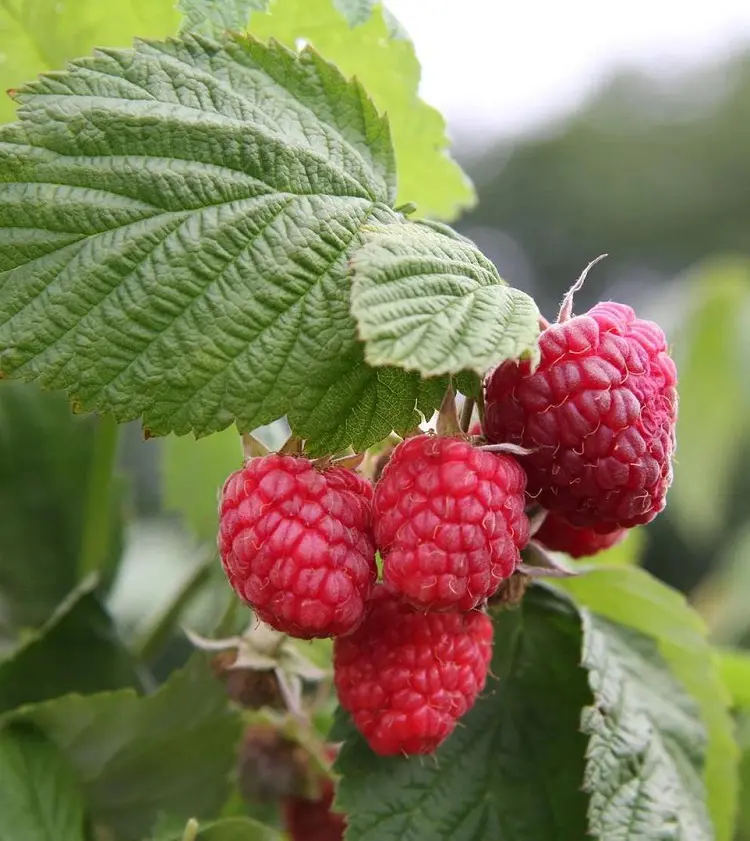
Caring for raspberries is crucial for the plant's growth and fruit production. Neglecting care can lead to reduced yields, susceptibility to diseases and pests, weed competition, soil degradation, and overcrowding issues.
Proper care ensures healthier plants, higher fruit quality, and a well-maintained raspberry patch. Regular monitoring and timely interventions are key to preventing and addressing potential problems.
Light
Raspberries thrive in full sun, requiring at least 6 hours of direct sunlight daily. Adequate sunlight is essential for photosynthesis, the process through which plants convert light energy into sugars.
Full sun exposure promotes vigorous growth, supports robust cane development, and enhances fruit ripening. IMeanwhile, insufficient sunlight can lead to sparse foliage, weak canes, and diminished yields.
Water
When you first plant raspberries, give them a good soaking to help their roots grow. Make sure the soil stays moist for the first few weeks. As they grow, keep the soil consistently damp.
Give the plants about 1 to 1.5 inches of water every week, either from rain or by watering them. Water deeply so that the roots can grow deep into the soil. This helps the raspberries stay healthy and strong.
Temperature
Raspberries flourish best in USDA hardiness zones 4-8, indicating regions with specific climate conditions suitable for their growth. These berries prefer temperatures ranging from 60°F to 75°F (15°C to 24°C) for optimal development.
Additionally, during winter, a chill is necessary for certain raspberry varieties, with temperatures between 32°F to 45°F (0°C to 7°C). This winter chill is crucial to break dormancy, a resting period, and stimulate the formation of fruit buds.
Humidity
Raspberries typically like moderate humidity, but they can handle different levels. It's best to avoid really high humidity because it can lead to fungal problems like powdery mildew and gray mold.
To keep your raspberry plants healthy, make sure there's good air circulation around them. This helps lower humidity-related problems and supports the overall well-being of the plants. So, keep the air flowing to keep your raspberries happy and disease-free.
Fertilization
Feed your raspberries with fertilizer for a thriving harvest. In early spring, before new growth starts, use a balanced fertilizer following package instructions to give necessary nutrients for the upcoming season.
For an extra boost, in late spring or early summer after the first harvest, consider a second application of fertilizer. This helps in the growth of new canes and promotes more fruiting.
Pruning
Pruning is crucial for healthy raspberries. Throughout the growing season, promptly eliminate dead or diseased canes. After harvesting, trim canes that bore fruit for summer raspberries.
For everbearing types, trim canes with fruit if you desire a fall crop. Pruning promotes plant vitality by removing potential sources of disease and focusing energy on productive growth.
Support Structures
When cultivating taller raspberry varieties, set up support structures such as trellises or stakes. These aids maintain the canes in an upright position, facilitating easier harvesting.
The support not only prevents the canes from drooping under the weight of the fruit but also promotes better air circulation, reducing the risk of diseases.
Harvesting Raspberries
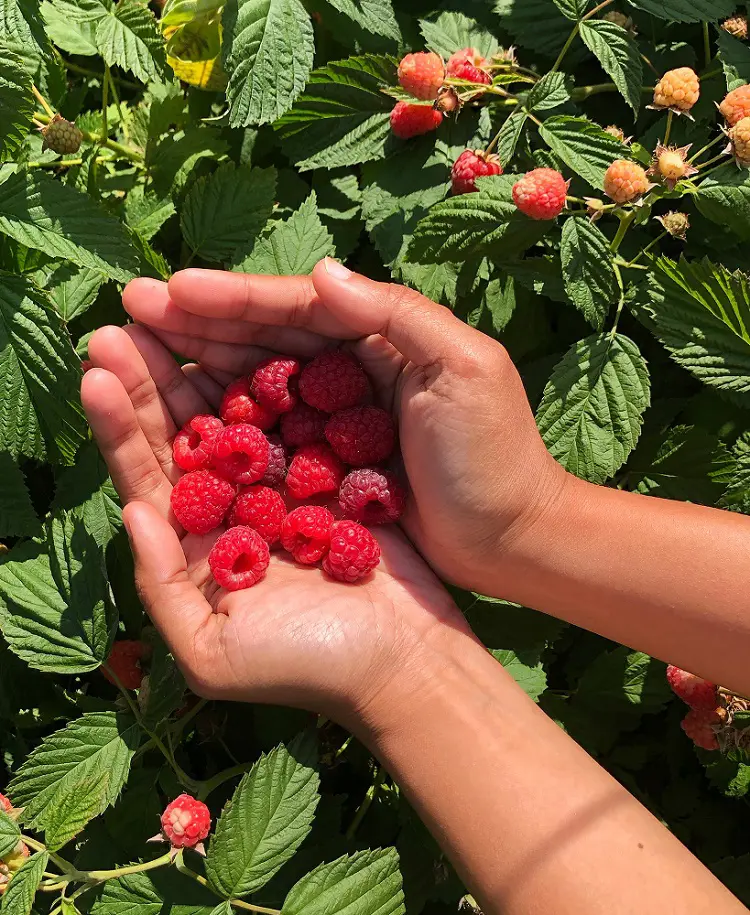
The right time to harvest raspberries depends on the variety. But, generally, berries are ready when they are fully colored, easily detach from the stem, and are firm. Harvesting is typically done in summer for summer-bearing varieties and throughout late summer and fall for everbearing types.
If not harvested promptly, raspberries become overripe, losing flavor and firmness. Overripe berries are also more susceptible to diseases, and unharvested fruit can attract pests. Regular, timely harvesting encourages continuous production and ensures the best quality berries.
How To Harvest Raspberries
To harvest raspberries, wait until the berries are fully colored, plump, and easily detach from the stem. Using gentle fingers, pick ripe berries directly into a shallow container. Harvest regularly as ripe berries appear to encourage continuous production. Be careful not to crush or bruise the delicate fruit during harvesting.
Avoid pulling on the canes, as this can damage the plant. Harvesting is typically done in the morning when temperatures are cooler. Once picked, store raspberries in the refrigerator for a short shelf life or freeze them for longer storage. Proper harvesting ensures the best flavor and quality of the berries.
How To Store Raspberries
To store raspberries, handle them gently to avoid bruising. Sort and remove any damaged or overripe berries. Refrigerate unwashed raspberries in a shallow container lined with paper towels to absorb excess moisture. Cover with a perforated plastic wrap or lid to maintain airflow. Consume within 1-2 days for optimal freshness.
For longer storage, freeze raspberries on a single layer on a tray before transferring them to a sealed container. To prevent clumping, add a light dusting of sugar before freezing. Thaw frozen berries in the refrigerator and use them promptly. Proper storage ensures extended freshness and preserves the flavor of raspberries.
Common Pests
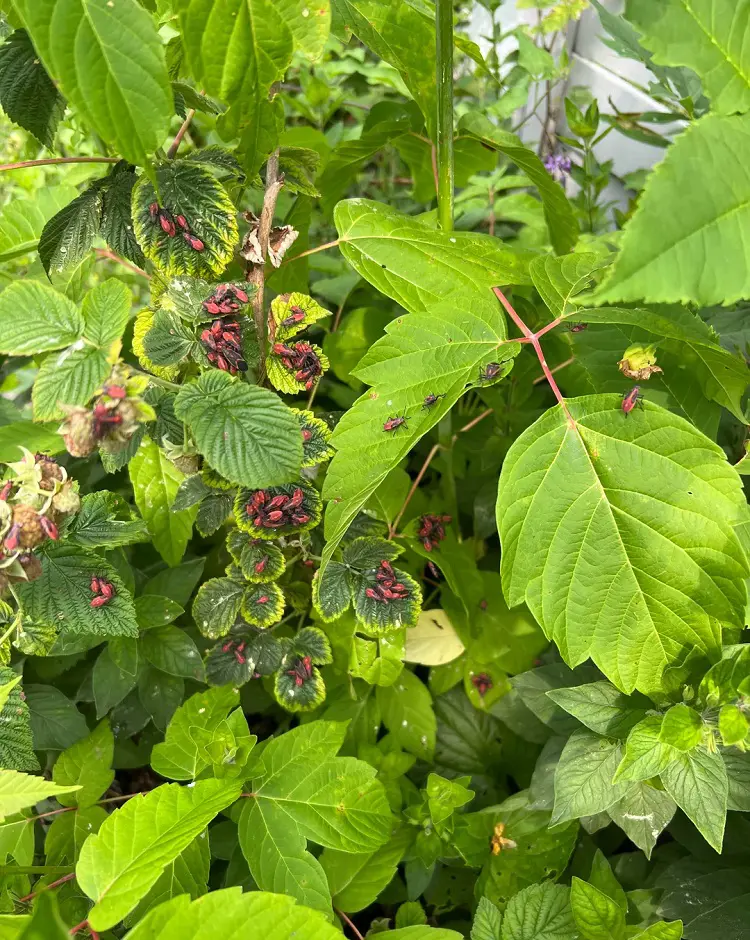
Raspberries are susceptible to various pests that can impact plant health and fruit production. Common pests in raspberries include:
- Raspberry Fruitworm: Larvae feed on developing fruit, causing damage.
- Japanese Beetles: Feed on leaves, flowers, and fruit, causing skeletonized foliage.
- Aphids: Suck sap from leaves, causing distortion and stunted growth.
- Spider Mites: Feed on plant sap, leading to stippling, yellowing, and webbing.
- Sawflies: Larvae feed on leaves, causing defoliation.
- Raspberry Crown Borer: Larvae bore into the canes, causing wilting and dieback.
- Thrips: Feed on leaves, causing silvering and distortion.
- Leafhoppers: Pierce plant tissues to feed, leading to stippling and curled leaves.
Preventive measures and integrated pest management (IPM) strategies, including regular inspection, beneficial insects, and organic or chemical treatments, can help control these pests and minimize their impact on raspberry plants.
Raspberry Types
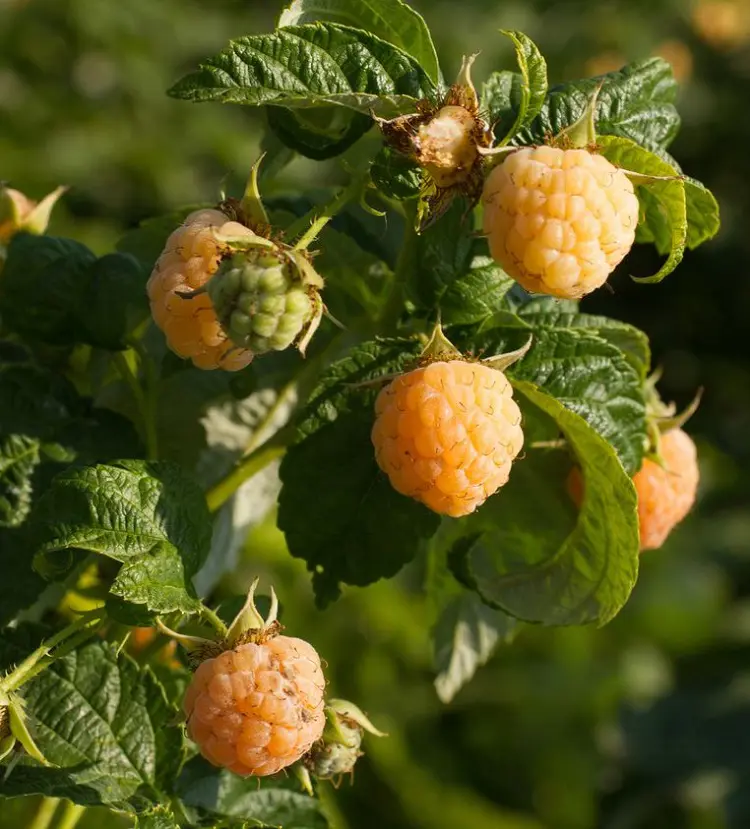
There are several types of raspberries that you can consider growing, each with its unique characteristics, flavors, and growing requirements. Raspberries are generally categorized into two main types: summer-bearing (floricane-fruiting) and everbearing (primocane-fruiting). Within these categories, there are different cultivars. Here are some popular types:
Summer-Bearing Raspberries
1. Red Raspberries:
- Heritage: A popular variety with good flavor and disease resistance.
- Boyne: Cold-hardy and suitable for northern climates.
- Latham: Known for its large, sweet berries.
2. Yellow/Golden Raspberries:
- Anne: Large, sweet, and yellow berries.
3. Purple Raspberries:
- Royalty: A purple variety with a unique color and good flavor.
Everbearing Raspberries:
- Autumn Bliss: Produces berries in both summer and fall, known for their sweetness.
- Heritage: Although primarily a summer-bearing variety, it often produces a fall crop as well.
- Caroline: A reliable everbearing raspberry with large, flavorful berries.
Black Raspberries (Blackcaps):
- Munger: A popular black raspberry variety with good flavor.
- Bristol: Known for its sweet and flavorful black berries.
Specialty Raspberries:
- Raspberry Shortcake: A dwarf, thornless raspberry bush suitable for small spaces or container gardening.
- Fall Gold: An everbearing golden raspberry variety with a unique flavor.
Thornless Varieties:
- Joan J: A thornless red raspberry variety with good disease resistance.
- Dorman Red: A thornless red raspberry suitable for home gardens.
Problems While Growing Raspberries
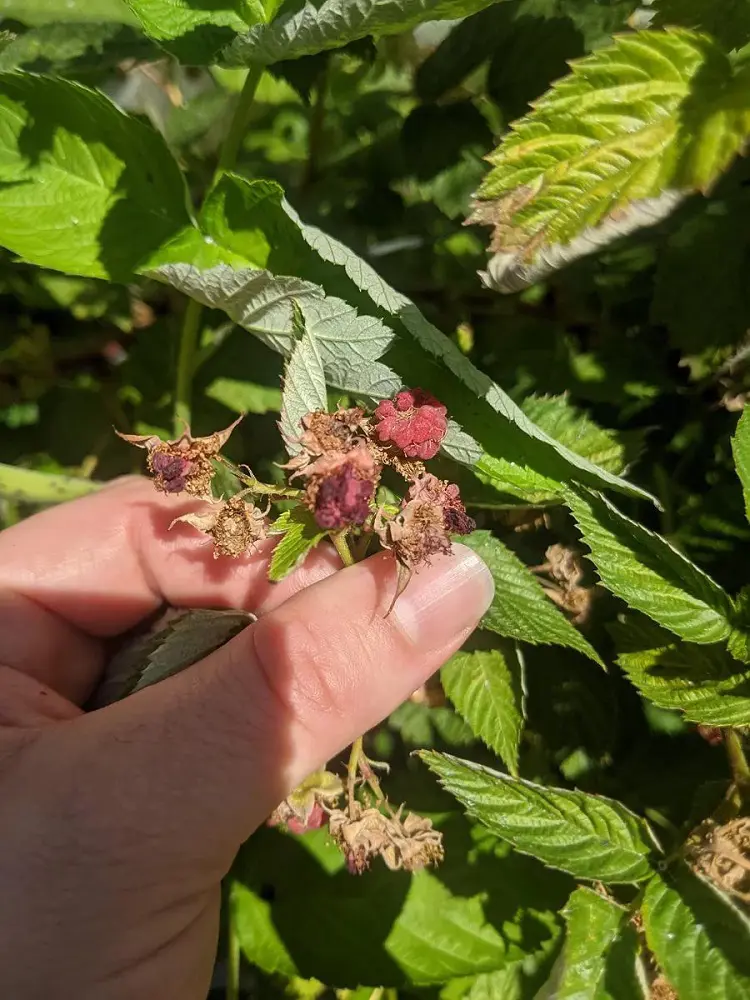
Growing raspberries can be rewarding, but like any crop, they may encounter various problems. Here are some common issues you might face while growing raspberries and potential solutions:
Disease
- Problem: Raspberries can be susceptible to diseases like anthracnose, gray mold (Botrytis), and various fungal infections.
- Solution: Practice good garden hygiene by removing and disposing of infected plant material. Consider choosing disease-resistant raspberry varieties. Apply fungicides as a preventative measure, especially during wet conditions.
Birds
- Problem: Birds, especially during fruiting season, may consume raspberries.
- Solution: Use bird netting to protect the ripening fruit. Scare devices like reflective tape or owl decoys may deter birds. Harvest ripe berries promptly to reduce the attraction.
Weed Competition
- Problem: Weeds can compete with raspberry plants for nutrients and water.
- Solution: Mulch around raspberry plants to suppress weeds. Hand-weed regularly to prevent competition. Consider using landscape fabric or cardboard covered with mulch to create a weed barrier.
Poor Fruit Production
- Problem: Inadequate fruit production can result from improper pruning, nutrient deficiencies, or environmental factors.
- Solution: Follow proper pruning practices for the specific type of raspberries you're growing. Test soil and amend it with appropriate fertilizers if necessary. Ensure proper spacing between plants for good air circulation, and provide adequate sunlight.
Drought Stress
- Problem: Raspberries may suffer during periods of drought, leading to reduced fruit quality.
- Solution: Provide consistent watering, especially during dry periods. Apply a layer of mulch to retain soil moisture. Drip irrigation systems are effective in delivering water directly to the roots.
Winter Injury
- Problem: Cold temperatures can damage raspberry canes, affecting overall plant health.
- Solution: Plant raspberry varieties suitable for your hardiness zone. Mulch around the base of plants in late fall to protect them from extreme temperatures. Consider erecting windbreaks to shield plants from harsh winter winds.
Improper Pruning
- Problem: Pruning mistakes, such as removing too much or too little, can impact fruit production.
- Solution: Learn and follow proper pruning techniques for the specific type of raspberries you have. Summer-bearing varieties typically fruit on second-year canes, while everbearing varieties can produce fruit on both first- and second-year canes.
Recent posts
How To Grow
How To Grow
How To Grow Garlic
A bulbous member of the onion family, garlic is prized for both its potent flavor and a variety of therapeutic applications. Due to its relative ease of cultivation, it is a favorite among home gardeners and a pioneer in kitchens worldwide. Garlic ma...
How To Grow
How To Plant and Grow Orchids
Orchids are one of the prettiest and most interesting flowers out there, with over 30,000 types and 200,000 hybrids. They are one of the biggest families of plants and can grow indoors or outdoors. However, growing and taking care of orchids is not e...
How To Grow
How To Plant, Grow And Harvest Corn All By Yourself
Growing your popcorn or sweet corn at home garden can seem like an interesting idea. However, it requires a large amount of space to grow as it is a tall plant that needs plenty of room to spread out. But, if you want to enjoy freshly popped po...
How To Grow
How To Plant, Grow And Care Cucumbers
Growing cucumbers is like going on a fun journey where you get to plant and pick your very own crunchy veggies. It's not just about having tasty cucumbers, it's also about the joy of seeing your plants grow. Whether you have a big garden or a small b...
How To Grow
How To Plant, Grow And Care Radishes In Your Garden
Growing radishes in your garden is a fantastic way to enjoy crisp and peppery veggies that you've nurtured from seed to plate. It's a straightforward process that anyone can try, even if you're new to gardening. In the following 12 steps, we'll guide...
How To Grow
How to Plant, Grow And Care For Spinach?
Growing leafy greens in your backyard garden is both healthy and fun. Spinach can be the best leafy green to start with as it is relatively easy to grow from scratch and can be harvested in about a month from planting. It thrives in spring or fall in...
